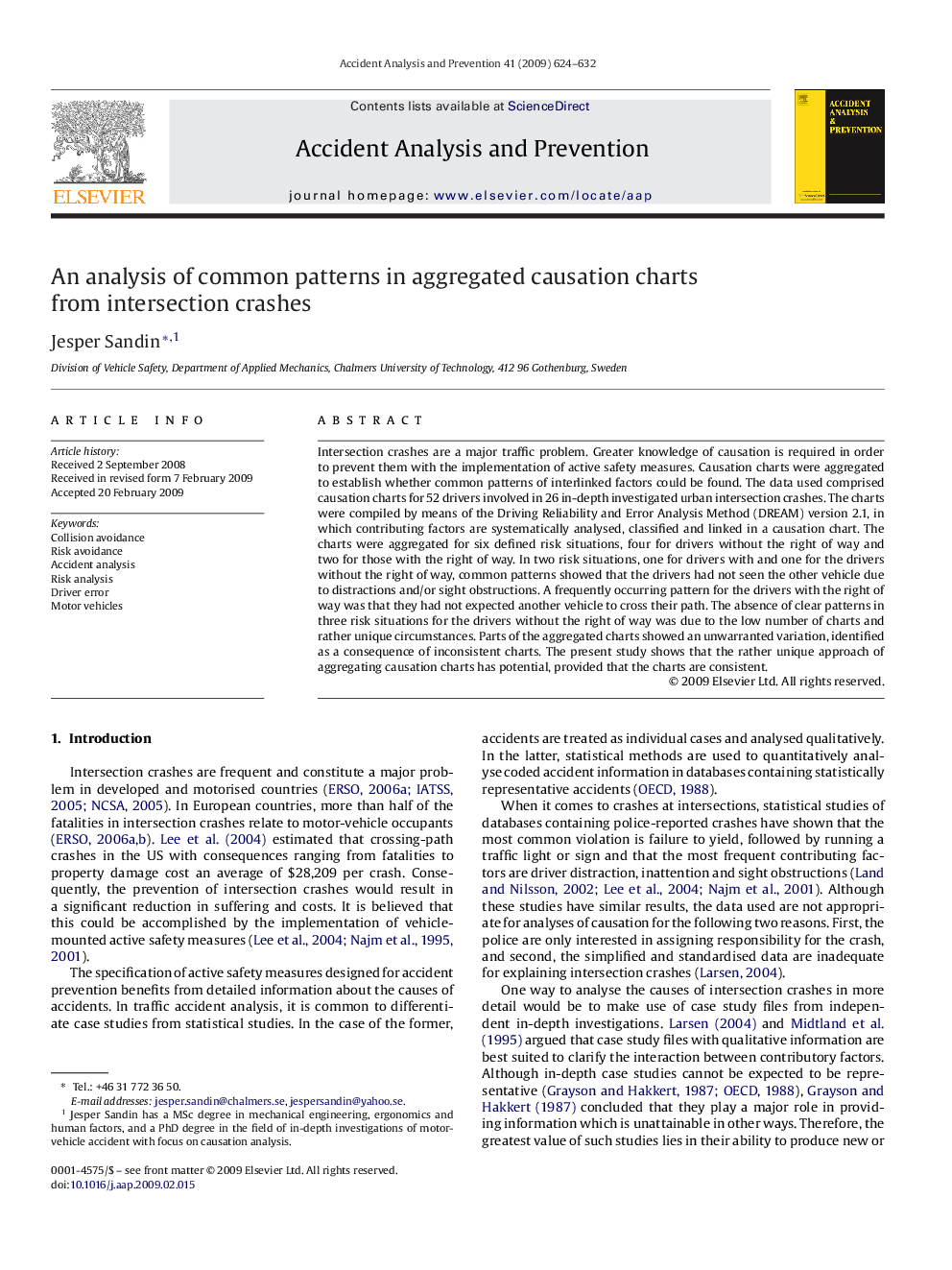| کد مقاله | کد نشریه | سال انتشار | مقاله انگلیسی | نسخه تمام متن |
|---|---|---|---|---|
| 573283 | 877393 | 2009 | 9 صفحه PDF | دانلود رایگان |

Intersection crashes are a major traffic problem. Greater knowledge of causation is required in order to prevent them with the implementation of active safety measures. Causation charts were aggregated to establish whether common patterns of interlinked factors could be found. The data used comprised causation charts for 52 drivers involved in 26 in-depth investigated urban intersection crashes. The charts were compiled by means of the Driving Reliability and Error Analysis Method (DREAM) version 2.1, in which contributing factors are systematically analysed, classified and linked in a causation chart. The charts were aggregated for six defined risk situations, four for drivers without the right of way and two for those with the right of way. In two risk situations, one for drivers with and one for the drivers without the right of way, common patterns showed that the drivers had not seen the other vehicle due to distractions and/or sight obstructions. A frequently occurring pattern for the drivers with the right of way was that they had not expected another vehicle to cross their path. The absence of clear patterns in three risk situations for the drivers without the right of way was due to the low number of charts and rather unique circumstances. Parts of the aggregated charts showed an unwarranted variation, identified as a consequence of inconsistent charts. The present study shows that the rather unique approach of aggregating causation charts has potential, provided that the charts are consistent.
Journal: Accident Analysis & Prevention - Volume 41, Issue 3, May 2009, Pages 624–632